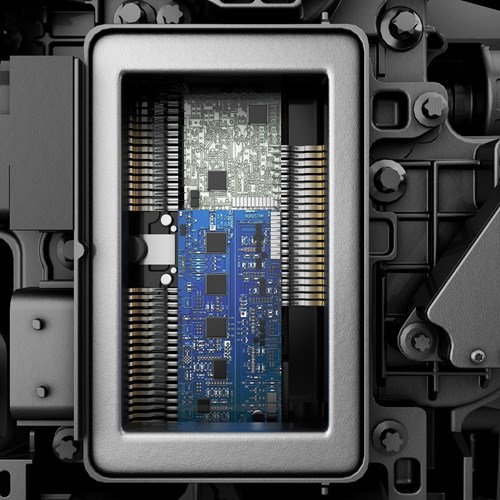What is an Automated Manual Transmission?

There are three types of transmissions used in the heavy-duty trucking segment: manual, automatic and automated manual. While it’s pretty easy to understand how a true manual transmission works, there’s often confusion about how automated manual transmissions (or AMTs for short) function versus automatic transmissions, and what unique benefits an AMT provides.

It’s important to understand that automated manual transmissions, such as the Detroit™ DT12™, are not automatic. While they are a two-pedal operation (using only an accelerator and a brake pedal, along with a shift stalk to select drive, neutral or reverse) and offer a very similar driving experience to automatic transmissions, AMTs basically function internally the same as manuals. AMTs are generally lighter than automatics, which means you can maximize your payload by having less total vehicle weight.
In reality, automated manual transmissions are manual transmissions. The most noticeable difference is that, rather than using a manual clutch pedal and gear stick shifter on the floor of the truck, a computer communicates with the transmission and engine to determine the optimal time to shift gears. So internally, an AMT is mostly the same as a manual. The mechanisms are exactly the same. In fact, you can even feel the slight pause during a gear shift that you would feel operating a traditional manual transmission.
Even though they are foundationally similar, automated manual transmissions have many benefits compared to true manuals in terms of safety, driver fatigue, maintenance and fuel economy. When driving AMTs, drivers are able to be safer by maintaining their undivided focus on the road and lessen the fatigue that comes with continual manual clutch/gear stick shifting situations. Additionally, since AMTs combine a traditional clutch-actuated manual gearbox with a computer-controlled shift actuator and clutch, they are always ‘on the job’ and operating with precision; this means the transmission will help monitor for clutch abuse and negate gear grinding. This use of AMT technology also greatly impacts fuel economy. Automated manual transmissions know exactly the right time to shift, taking grade, load weight and other factors into account, helping to maximize fuel economy. Due to these factors, AMTs are more often the preferred transmissions for on-highway applications.

Learn more about our automated manual transmissions, the Detroit DT12, available in all Freightliner Cascadia models.